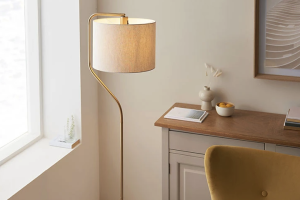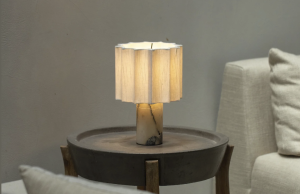Himalayan salt lamps have become increasingly popular in recent years, with claims that they provide numerous benefits, including improving air quality, reducing allergies and asthma, and promoting relaxation. However, the validity of these claims has been widely debated. The purpose of this article is to provide a comprehensive review of the scientific evidence surrounding Himalayan salt lamps to determine whether they are a legitimate health product or just another overhyped trend.
What Are Himalayan Salt Lamps?
Himalayan salt lamps are made from large blocks of pink salt crystals that are mined from the Khewra Salt Mine in Pakistan. The chunks of salt are hollowed out and a light bulb or candle is placed inside, creating a gentle, warm glow. The lamps are often marketed as “natural ionizers,” emitting negative ions that supposedly improve air quality and provide a range of health benefits.
The Science Behind Negative Ions
Negative ions are molecules that have gained one or more electrons, giving them a negative charge. These ions can be found in abundance in natural environments such as forests, beaches, and waterfalls. It has been suggested that negative ions can have a range of health benefits, including improving mood, boosting energy levels, and reducing stress and anxiety.
While some studies have found a positive correlation between negative ions and these benefits, the evidence is still inconclusive. Additionally, the number of negative ions produced by Himalayan salt lamps is likely negligible, as the lamps emit a very small amount of light and heat.
Do Himalayan Salt Lamps Improve Air Quality?
One of the most common claims surrounding Himalayan salt lamps is that they improve air quality by emitting negative ions, which neutralize positive ions and pollutants in the air. However, the scientific evidence does not support this claim.
A study published in the International Journal of Environmental Health Research found that while salt lamps did produce some negative ions, they did not have any significant effect on air quality. Another study conducted by the Illinois Institute of Technology found that salt lamps did not produce negative ions in sufficient amounts to have any impact on air quality.
Other Claims About Himalayan Salt Lamps
In addition to improving air quality, Himalayan salt lamps are often marketed as providing a range of other health benefits, including:
Reducing Allergies and Asthma
Some manufacturers claim that Himalayan salt lamps can reduce allergy and asthma symptoms by purifying the air. However, there is no scientific evidence to support this claim.
Promoting Relaxation
Himalayan salt lamps are also marketed as promoting relaxation and reducing stress and anxiety. While the warm, gentle glow of the lamp may be soothing, there is no evidence to suggest that it has any specific physiological effect on the body.
Improving Sleep
Similarly, some manufacturers claim that Himalayan salt lamps can improve sleep by promoting relaxation and reducing stress. However, there is no scientific evidence to support this claim.
While Himalayan salt lamps may be aesthetically pleasing, there is no scientific evidence to suggest that they provide any significant health benefits. Claims that these lamps improve air quality, reduce allergy and asthma symptoms, or promote relaxation and better sleep are largely unfounded. If you are considering purchasing a Himalayan salt lamp, do so for its aesthetic value rather than any purported health benefits.






More Stories
Elegant Cold Marble Base Table Lamp for Dining Room
Enhance Your Dining Room with Small Ceiling Lights
10 Small Dining Room Lighting Ideas for a Cozy Space